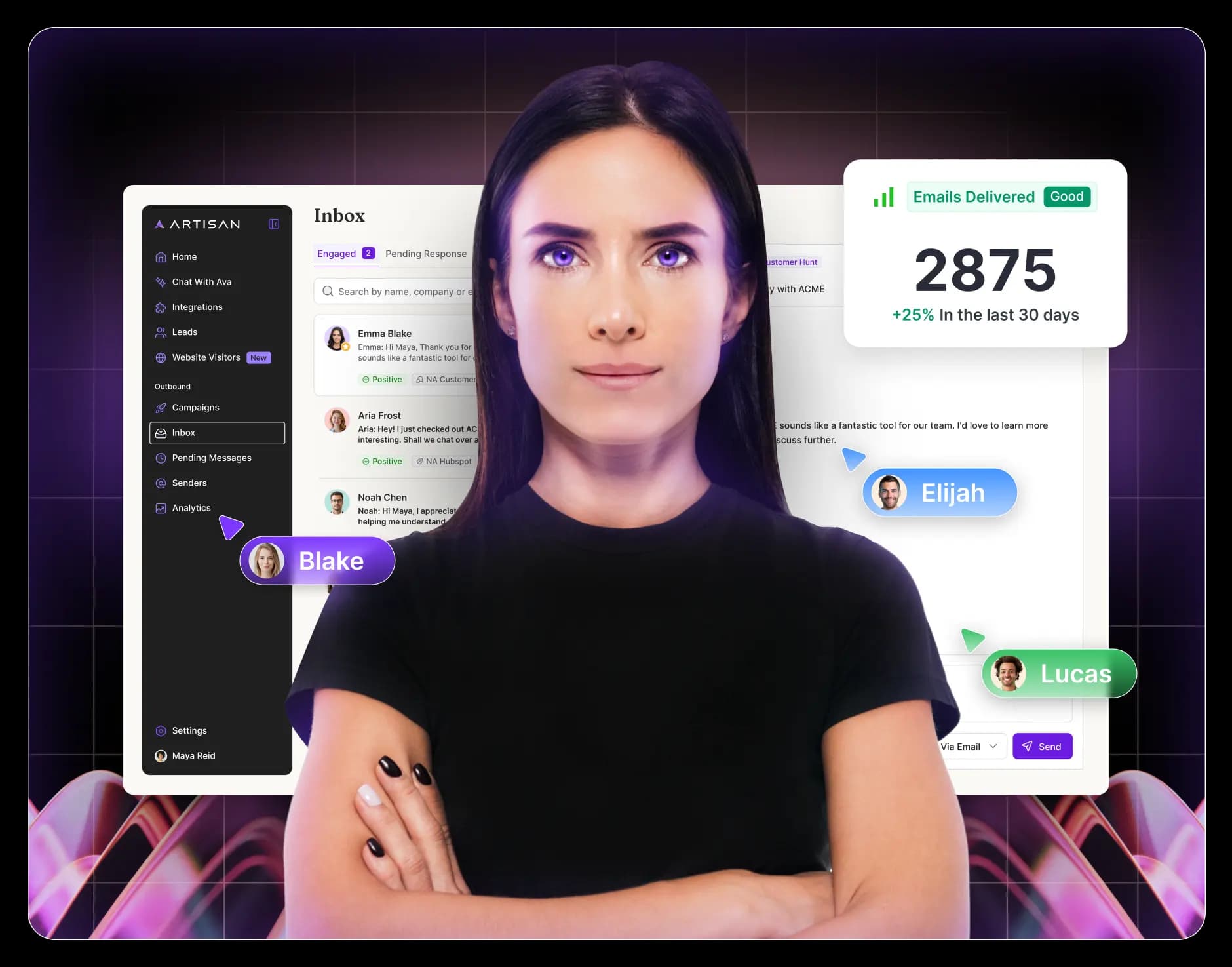Breaking Down the 8 Essential Stages of the B2B Sales Pipeline

According to Hubspot, 40% of businesses fail to hit revenue goals. Is this because of bad products or markets in a downturn?
No. It’s because they haven’t implemented a well-managed B2B sales pipeline.
But what exactly is the sales pipeline? Is it the same as a sales funnel? What are the steps of a functional pipeline that gives us real insight into an overall sales process?
In this article, we’ll cover the eight essential phases of a significant sales pipeline and provide insights into what goes into a robust sales strategy that you can deploy and optimize.
What is a B2B Sales Pipeline?
The B2B sales pipeline is the map of all touchpoints potential leads move through, from first touch to final sale. As the name suggests, these touchpoints are arranged sequentially, a pathway for your sales team to engage future customers.
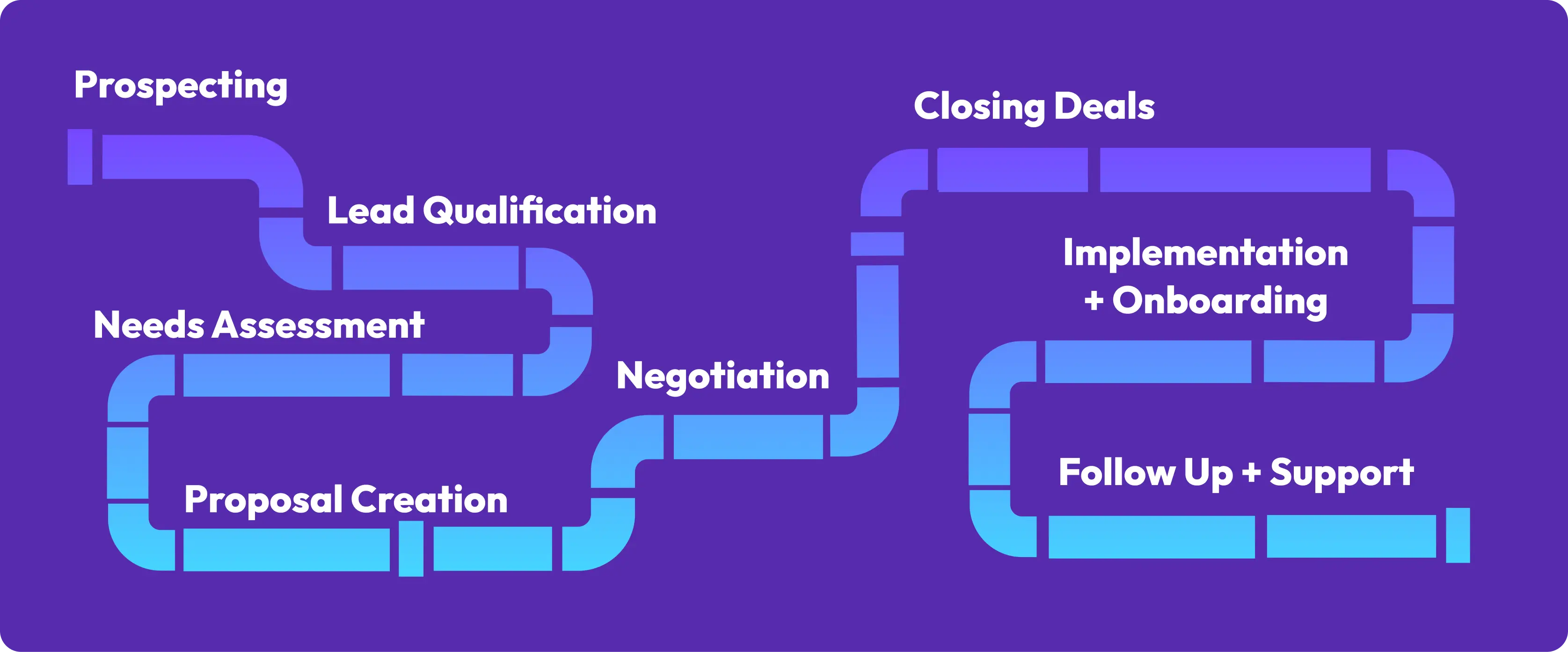
More importantly, the pipeline gives your team the visibility and structure to understand the relationships between different stages, what it means to nurture customers through various stages, and how to optimize each part of the pipeline to increase leads and sales.
Benefits of a Structured Sales Pipeline
The point of a sales pipeline is to ensure that leads follow a well-structured path where your organization can engage them every step of the way.
Some of the core benefits of a well-structured B2B sales pipeline include the following:
1. Improved sales forecasting accuracy
Since your pipeline will contain well-defined and demarcated engagement and lead evaluation stages, it is much easier to understand how far each lead has gone down the pipeline and forecast potential sales. And, with increased forecasting accuracy comes increased revenue.
2. Enhanced lead management and nurturing
With optimized sales pipeline management, sales can more effectively nurture potential buyers toward a purchase using behavioral data, targeted messaging, and advanced lead nurturing techniques that draw from accurate lead qualifications and multi-channel communications.
3. Increased visibility into the sales process
A sales pipeline gives you a bird's-eye view of your prospecting and nurturing landscape, with the option of zooming in to view any specific contact point. This means a clearer vision of the customer journey, particular processes for nurturing leads, and places where poor sales tactics or performance bottlenecks limit productivity.
4. Better alignment between sales and marketing efforts
Sales and marketing departments often work on different schedules and priorities. That being said, marketing is critical to help raise brand awareness and nurture leads through the sales process with enablement materials and other types of content. With a well-structured pipeline, you can make sure your marketing materials are tailored for specific leads at specific points of their customer journey.
B2B Sales Pipeline vs. B2B Sales Funnel
If you are around marketing and sales professionals, you might hear phrases like “funnel” and “pipeline” used interchangeably (and incorrectly). These frameworks represent fundamentally different ideas for shaping the customer journey through various sales activities.

Focus and Scope
A sales pipeline describes how a lead moves through an ongoing sales process, from lead generation to conversion and maintenance. You might consider this your perspective on generating leads, demonstrating a product’s features, and optimizing customer engagement via strategic outreach. When mapping a B2B pipeline, you’ll most likely focus on metrics like sales performance, lead generation, and how leads are nurtured from one process point to another.
A sales funnel represents the customer’s approach to your product or service, starting with broad awareness (the “mouth” or the “top of the funnel”) and moving through consideration, evaluation, and sale (the “bottom of the funnel”). The scope of the funnel includes metrics on initial contact, conversion rates at different parts of the funnel, and where (potentially) paying customers enter the funnel.
Stages and Progression
The sales pipeline involves more sequential processes involving direct action from your salespeople or automation technologies. These stages start with sales prospecting and move through lead qualification, needs assessment, and so on, to a final sale and ongoing support. At each point of this pipeline, the emphasis is on action. Sales representatives understand how the actions and data collected inform their performance in the next task.
On the other hand, the sales funnel details the customer journey and what they might look for during that journey. The broader strategies deployed at the top of the funnel (awareness) represent potential customers just learning about your brand, and outreach throughout that buying process moves with the customer towards consideration, evaluation, and intent to purchase. This approach is much more generalized than the pipeline approach.
While the funnel gives a big-picture understanding of a customer journey, the pipeline reflects specific stages and optimized actions during those stages.
8 Essential B2B Sales Pipeline Stages
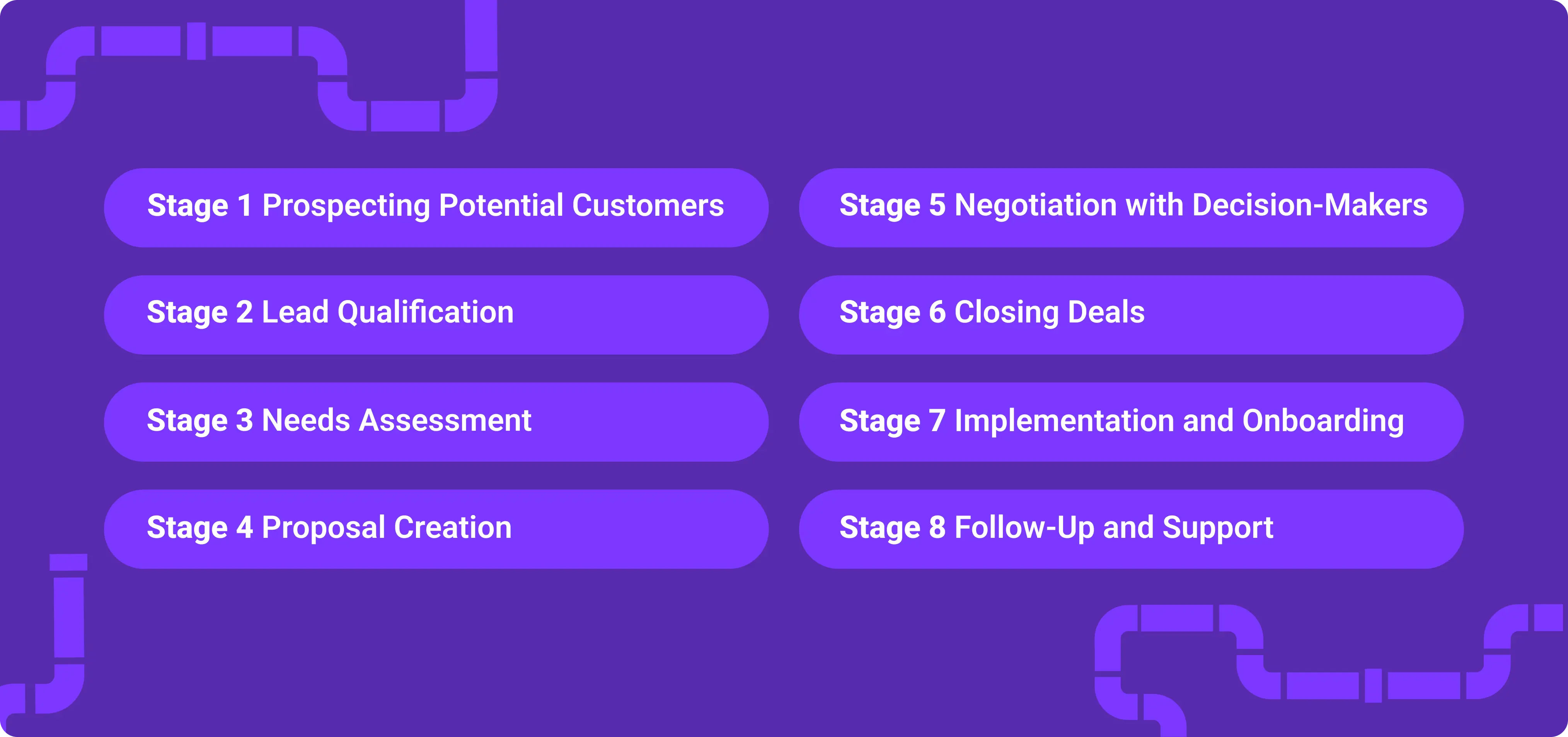
Stage 1: Prospecting Potential Customers
The sales cycle starts with potential customers. You must have an ideal picture of your customer and an understanding of how to reach that target audience.
The first step in sales pipeline management is to generate ICPs that reflect the customers you want to approach. Creating a good ICP will involve identifying your top B2B companies based on demographics, financial characteristics, and behavioral characteristics – information that you should be able to utilize through an advanced platform like Artisan and our database of 300M+ B2B contacts.
The next step involves prospecting potential inbound customers that align with your ideal customer profile. Outreach can include cold calling and cold emailing, networking at industry events, or (more common in modern sales) leveraging social media platforms like LinkedIn to target potential leads with paid and organic messaging.
Stage 2: Lead Qualification
Lead qualification determines a new lead's value against your business or product strategies. Sales experts can apply any of the criteria or methodologies to apply a score to potential candidates to separate the “wheat from the chaff” or, more accurately, poor leads from those with the potential to become sales.
To qualify leads, you should focus on scoring criteria based on a methodology. What is important to you–demographics? Revenue? Behaviors?
Leads can be scored across criteria like:
Demographics include professional positions, industry, location, and income.
Behavioral qualities like responses to email sequences or browsing patterns on e-commerce sites.
Predictive lead scoring, usually supported by machine learning or AI, can use historical and CRM data to predict a lead's potential.
Negative scoring takes points away from leads with specific criteria.
Typically, approaching scoring through a single criterion will have the least amount of flexibility or accuracy to qualify leads. A more comprehensive framework allows you to rank leads across several criteria.
One such framework is the Budget, Authority, Need, and Timeline (BANT) framework, which combines a few data points to qualify a lead: who they are, whether they can make decisions, and whether they can afford the solution.
Another approach you can deploy is MEDDIC (Metrics, Economic buyer, Decision criteria, Decision process, Identifying pain, and Champion). MEDDIC is a more in-depth alternative to BANT, asking you to understand pain points and customer decision-making processes.
BANT and MEDDIC criteria can be formulated during the initial prospecting stage through conversations, surveys, or interviews. This involves specialized and targeted questions that can gather this information:
Phone calls can be an immediate and “human” approach to information-gathering, but they require a time investment from the prospect.
Emails are much more convenient but often ignored; even the best piece of email marketing can be lost or forgotten in a bust inbox.
Surveys are great ways to gather specific information but can feel informal or a chore for a prospect.
Use Artisan’s database of 300M+ B2B contacts to build an elite lead-scoring framework. Try Ava Now.
Stage 3: Needs Assessment
Making a sale is impossible without clearly understanding the new customer’s needs. Fortunately, there’s a great way to find that information during initial and ongoing meetings.
Once you’ve identified, prospected, and qualified a lead, it’s critical to identify their pain points and explain how your solution solves them.
Some more effective ways to get leads to open up about pain points include:
Using open-ended questions to provoke thoughtful responses.
Using follow-up questions to dig into details of specific challenges.
Develop hypothetical scenarios where the customer has to talk about a particular approach or ideal for their organization.
Ask about personal insights alongside quantifiable faces (i.e., “Why do you think X is a problem?”)
You could also offer a free demo at this juncture. Hubspot notes that prospects are 75% likely to buy at the demo stage.
Stage 4: Proposal Creation
So, you’ve identified a lead, qualified it, and you have a pretty good grasp of their needs and pain points. If you’re in this far, a buyer will expect a proposal outlining what purchasing might look like. This isn’t just an invoice or a marketing brochure; it’s an in-depth description of what the customer will get and how this customer relationship will unfold.
A typical proposal will include some primary sections like:
An introduction and needs statement that outlines the terms of the relationship and the features and capabilities you are delivering to solve specific problems.
A description of the specific solutions, features, functions, or tools sold or provided to the customer.
Deliverables like access to the product, any white-glove or support services, credits, and so on.
A timeline for these deliverables, including immediate next steps.
Pricing, payment terms, and deadlines.
Case studies and testimonials that demonstrate the value of your solution to decision-makers.
Stage 5: Negotiation with Decision-Makers
If you have nurtured a prospect this far, congratulations – leads at the negotiation stage are 90% likely to buy. The initial proposal isn’t a final agreement, however. Once it is in the customer's hands, negotiations will likely follow to hammer out specifics and reach a mutually beneficial arrangement.
Some of the more critical parts of negotiating with decision-makers include:
Identifying customer wants and needs and balancing them against your expectations, sales targets, and business goals.
Fielding objections and counter-proposals with understanding and flexibility without sacrificing profitability or growth. This will include a strong knowledge of the product and its capabilities.
Recognizing where negotiations have stalled and how to keep things moving forward, even if that includes escalation or including other stakeholders.
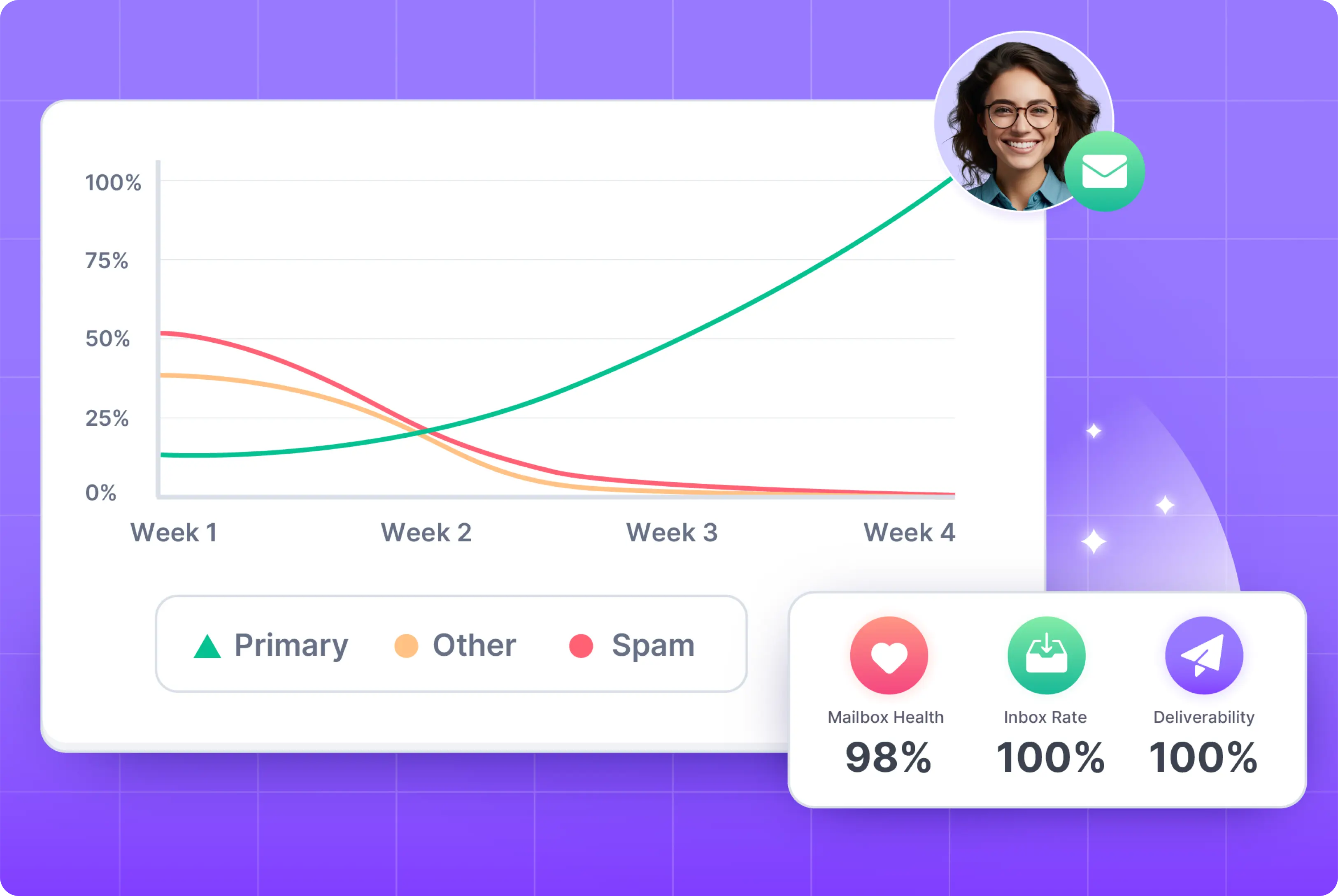
Stage 6: Closing Deals
All these negotiations lead toward the ultimate goal of closing the deal. However, getting a potential customer to make a final purchasing decision can be just as difficult as the negotiations proceeding with that decision.
How can you close a deal effectively? You can:
Act like the deal is closed (assumptive close), ushering the customer toward the adoption and onboarding phase.
Create urgency (urgency close) through limited-time deals or a window for accepting a proposal.
Summarizing (summary close) all the benefits the customer will experience is a way to highlight your product's positive aspects and keep the process moving.
Maintain a direct approach (direct close) and frankly approach the customer with a sense of transparency.
None of these approaches is one-size-fits-all, and you still need to apply common sense and intuition to understand if a lead is ready to buy.
Some signs that they want to move to the next stage include
Forward questions about implementation or budget
Discussions about specifics about the final terms of the proposal
Providing positive feedback on the proposal or product
Seeking a trial or demo of your product and services
Stage 7: Implementation and Onboarding
The transition from sales to implementation is a crucial phase that ensures a smooth handover from the sales team to the implementation or customer success team. This phase is vital for maintaining customer satisfaction and ensuring that the promises made during the sales process are effectively delivered.
A handover phase will include initial kick-off meetings, planning, and expectation-setting. At this point, you’ll most likely cover the finer points of implementation, risk management, and security.
Next is onboarding and training. Sometimes, onboarding can be automated via online platforms and knowledge repositories. For more advanced training needs, support resources (like customer service and documentation) will complement a more robust engagement with virtual or on-site training programs.
Finally, there’s monitoring to ensure customer success. This is perhaps the most important part of implementation. You must have the workforce and support that the customer expects in place so that they remain a customer and meet the outcomes you identified during the sales process.
Stage 8: Follow-Up and Support
The deal is done, and the customer is on board and using the solution. But your work isn’t over. It’s imperative to support that customer so that they get the best service possible. This leads to better feedback, better testimonials and stories, continued revenue, and the potential for future sales through referrals.
Support is a proactive process. Treating customers as important as any other customer is also critical. This includes
Having a dedicated point of contact for the customer who is regularly available and responsive.
Conducting proactive outreach via regular check-ins.
Automating regular surveys triggered on specific events that allow customers to provide feedback.
Using CRM systems like Artisan that track ongoing interactions and keep records of customer preferences and needs.
Create feedback loops by constantly collecting, analyzing, and acting on customer data using your sales team, customer service team, and CRM.
These sales opportunities can be used to cross-sell or up-sell products or services that address existing or emerging customer needs.
Optimize Your B2B Sales Pipeline With AI
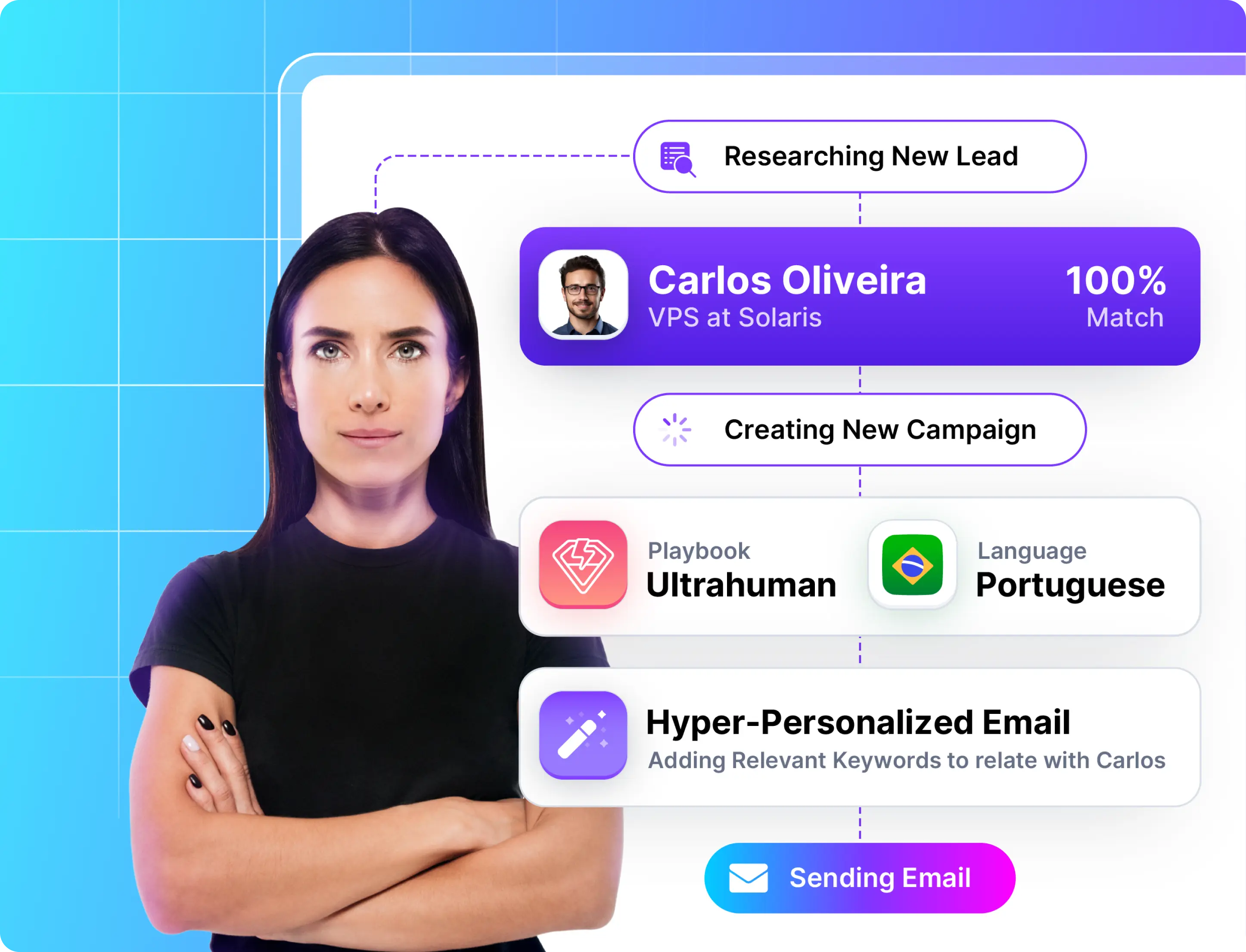
A Hubspot report shows that 32% of salespeople see the volume of emails sent as a sign of productivity. It follows that automation is a significant part of sales management, and AI is radically transforming automation to help salespeople optimize their pipeline.
AI SDRs (like Ava) are the perfect tool for blending creativity with sales automation. For example, our AI SDR can handle personalized email sequences to nurture leads through different sales pipeline phases.
Other Artisan features, such as integrated sales playbooks, AI-generated email warmup, and a database of over 300M B2B contacts, move you away from old spreadsheets and into a modern, AI-driven sales pipeline.
Use automated lead generation and prospect management to take your sales pipeline to the next level. Try Artisan today.
